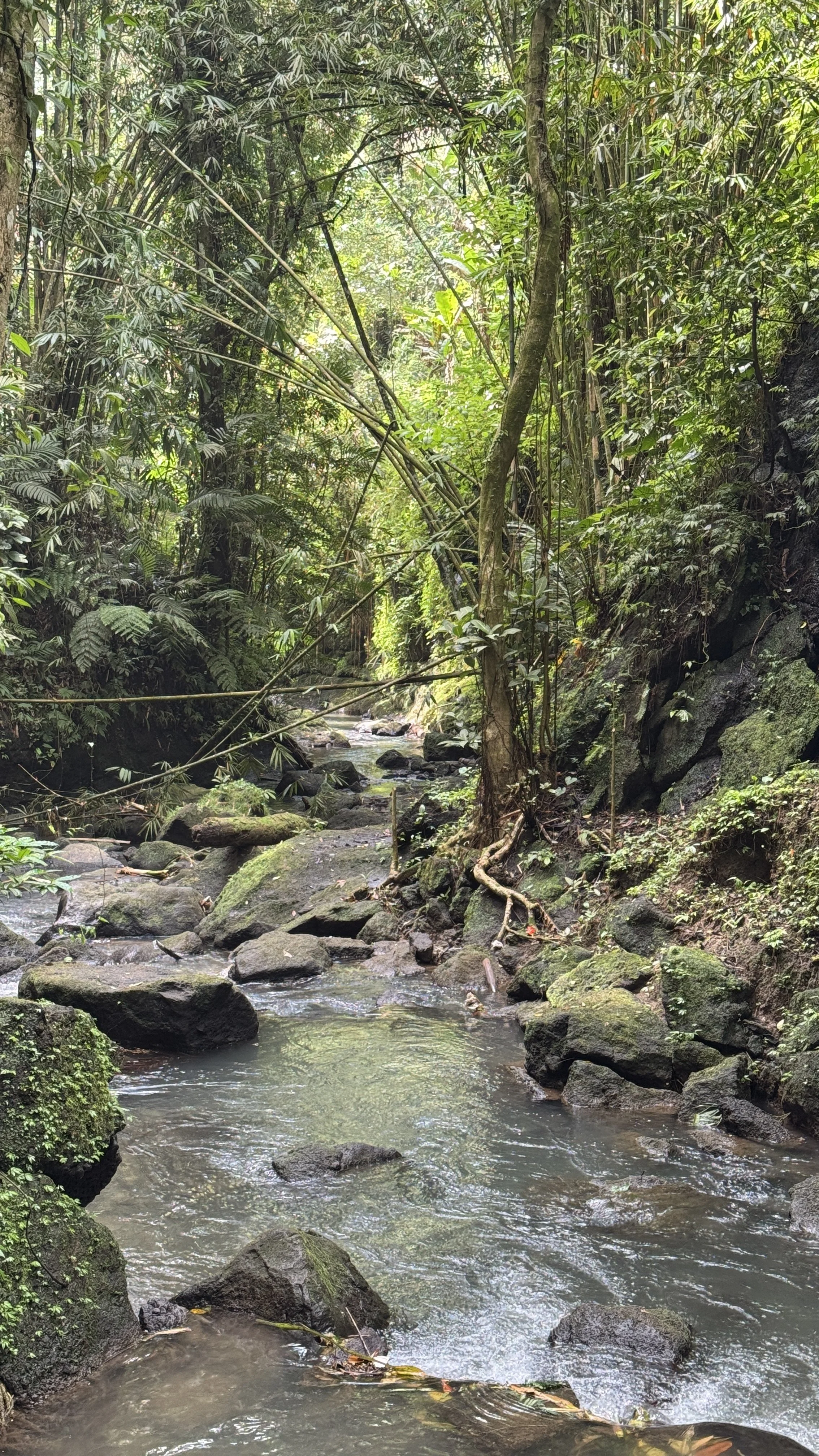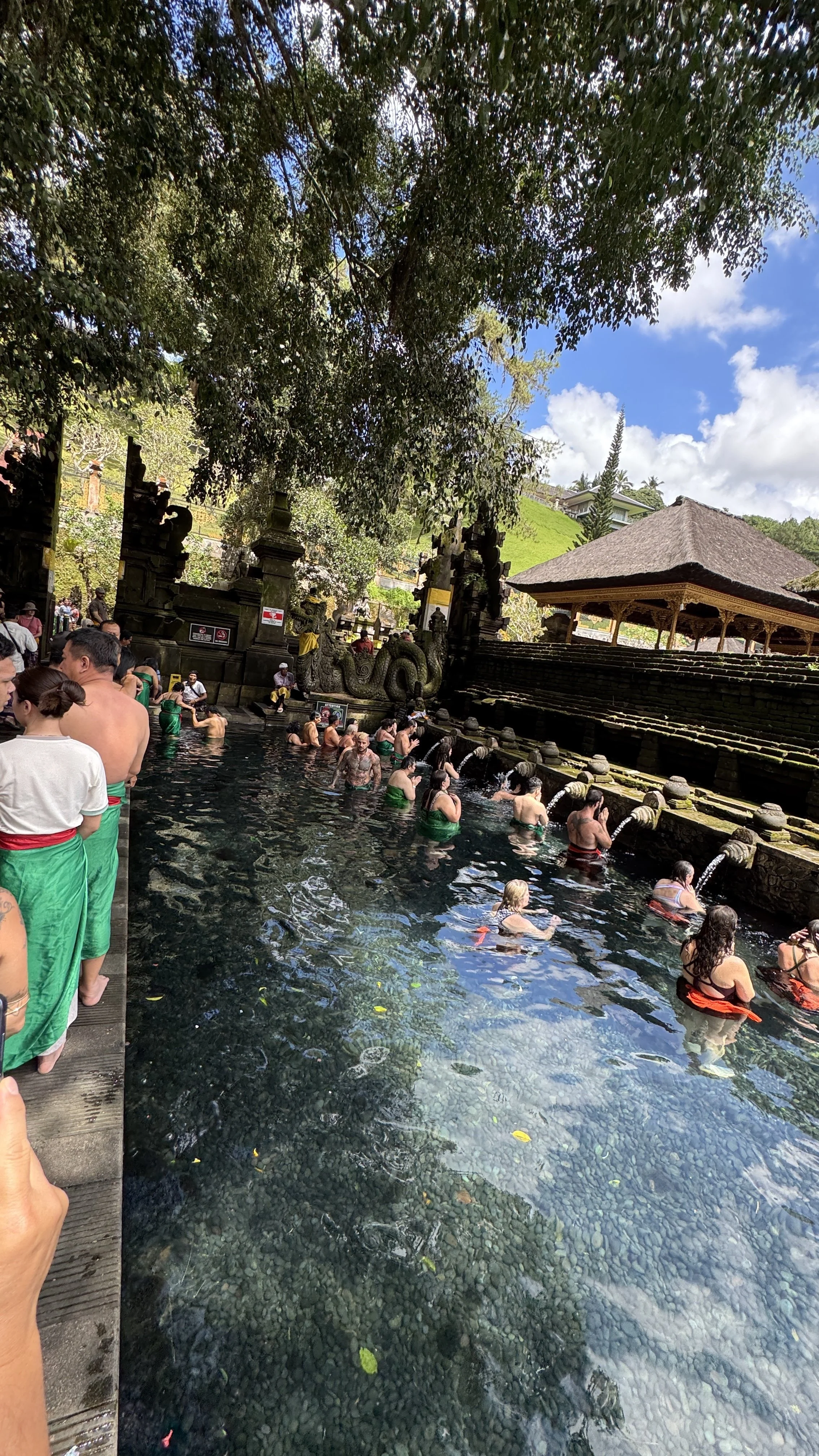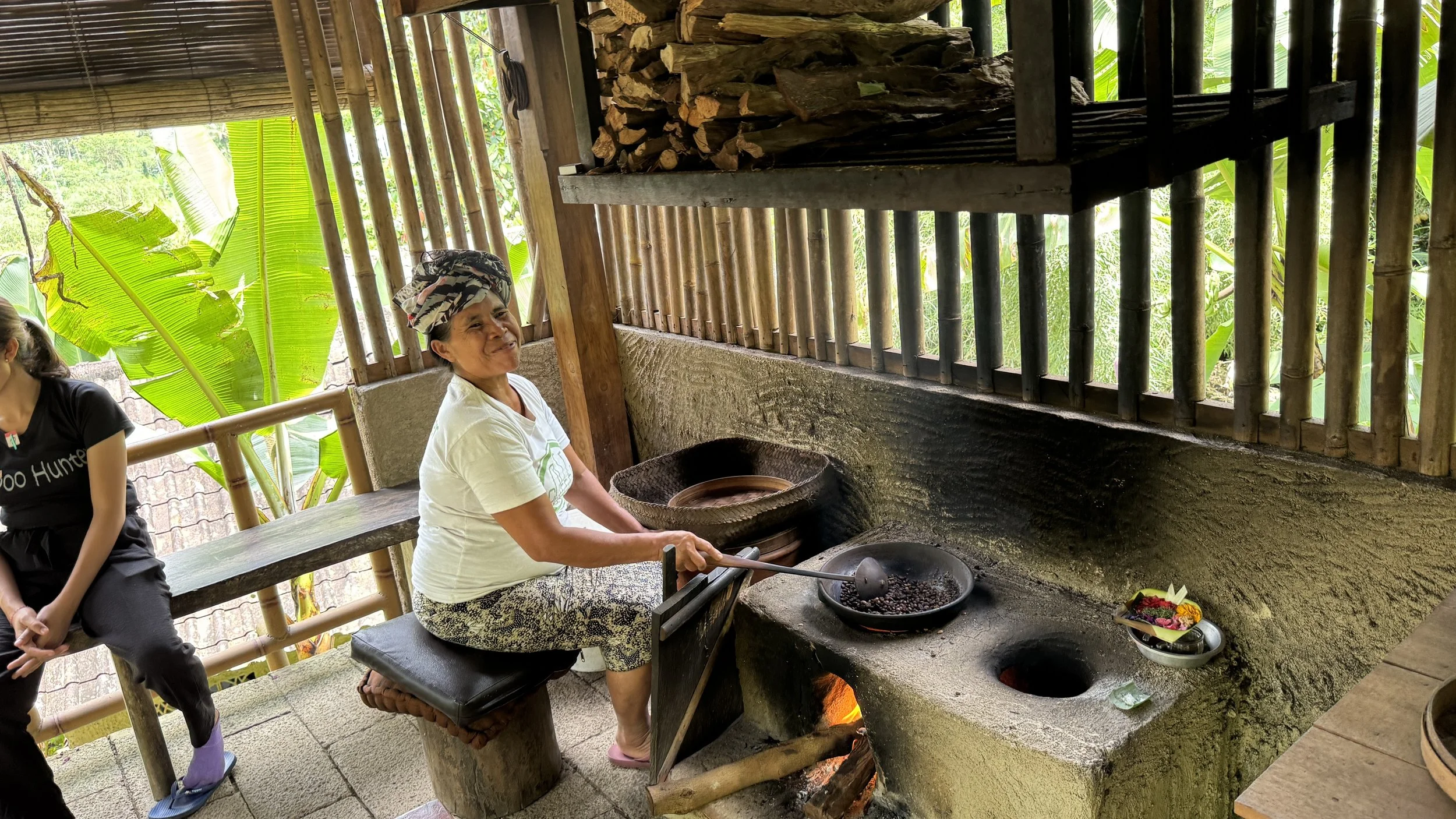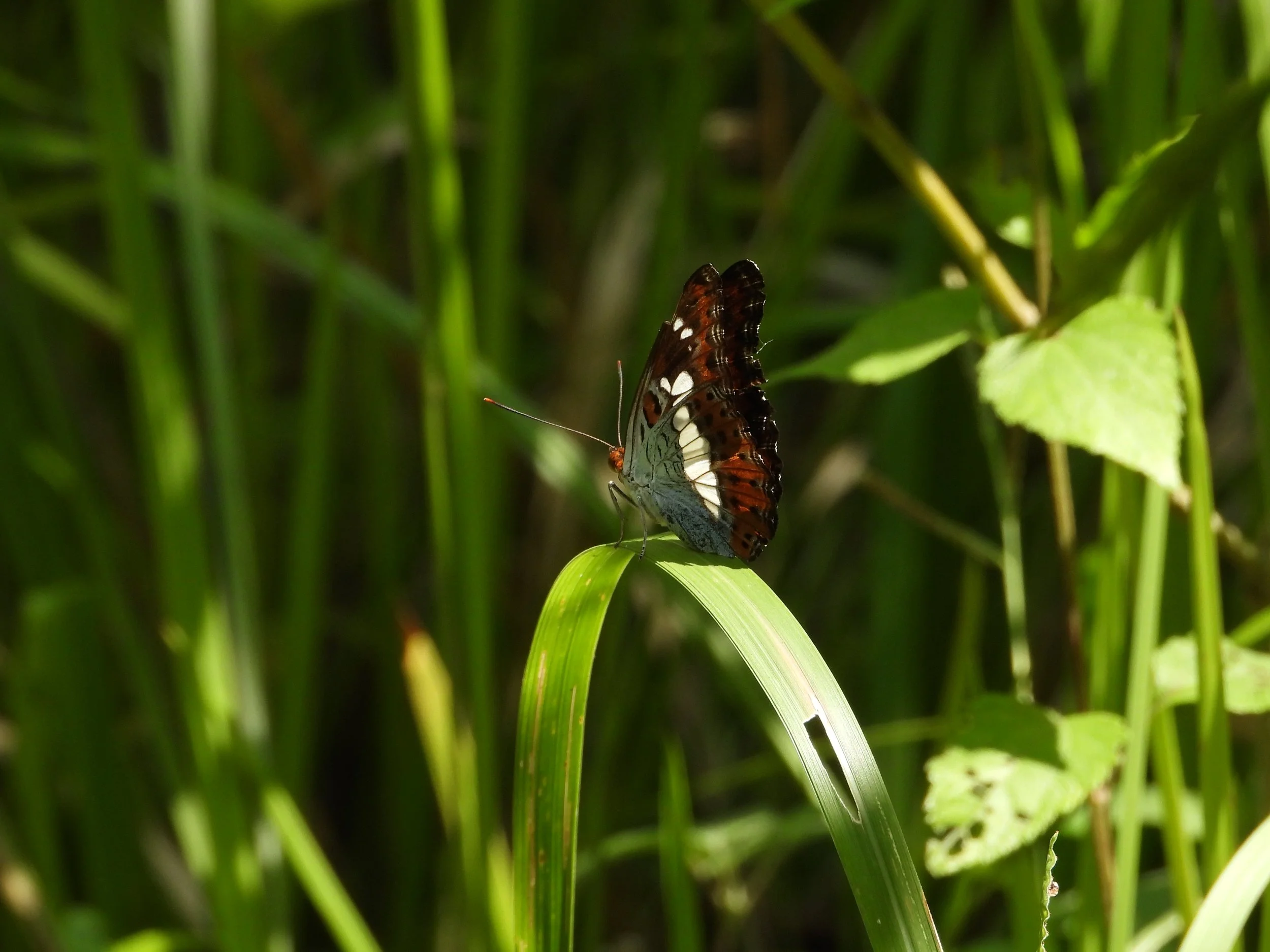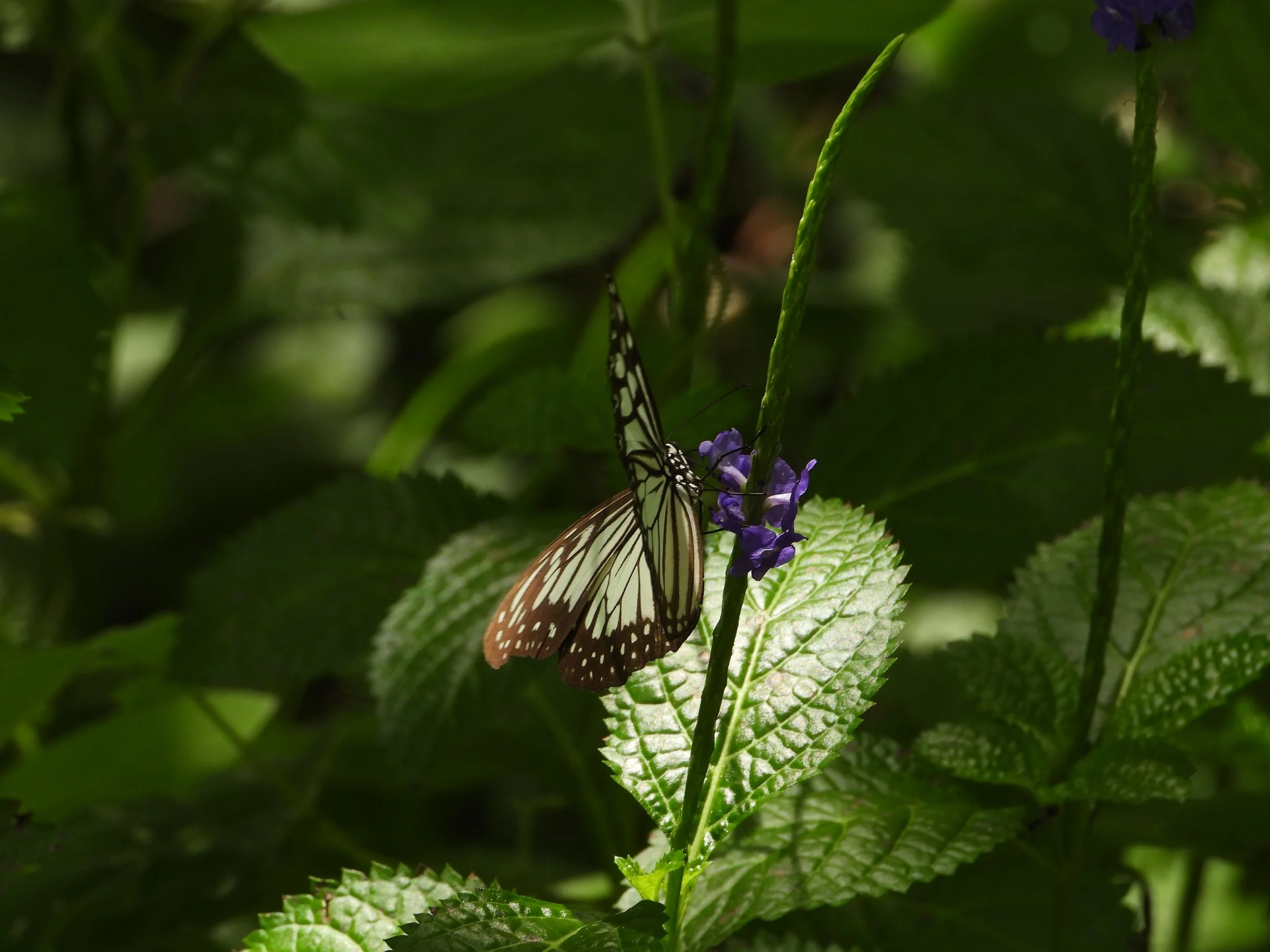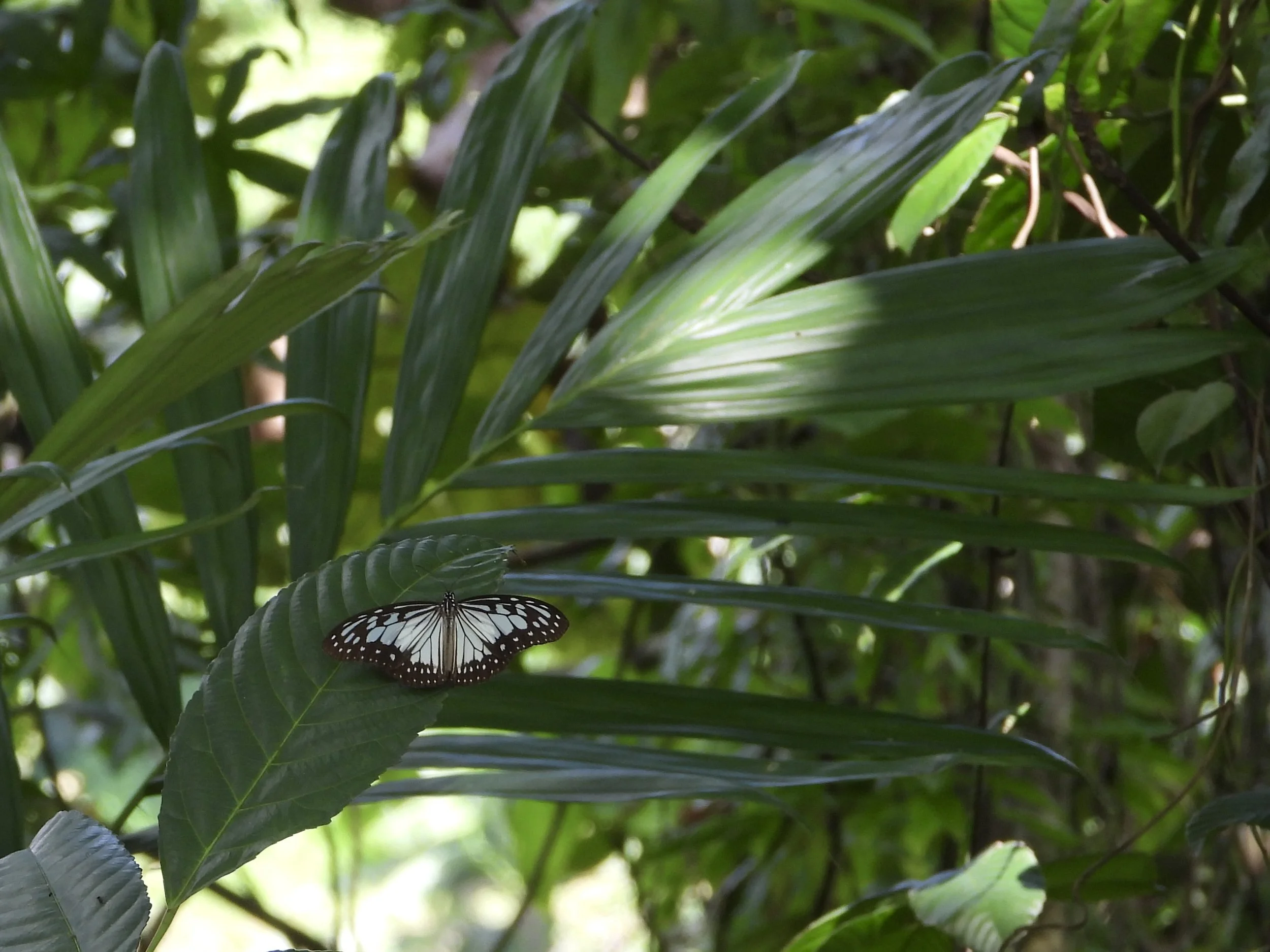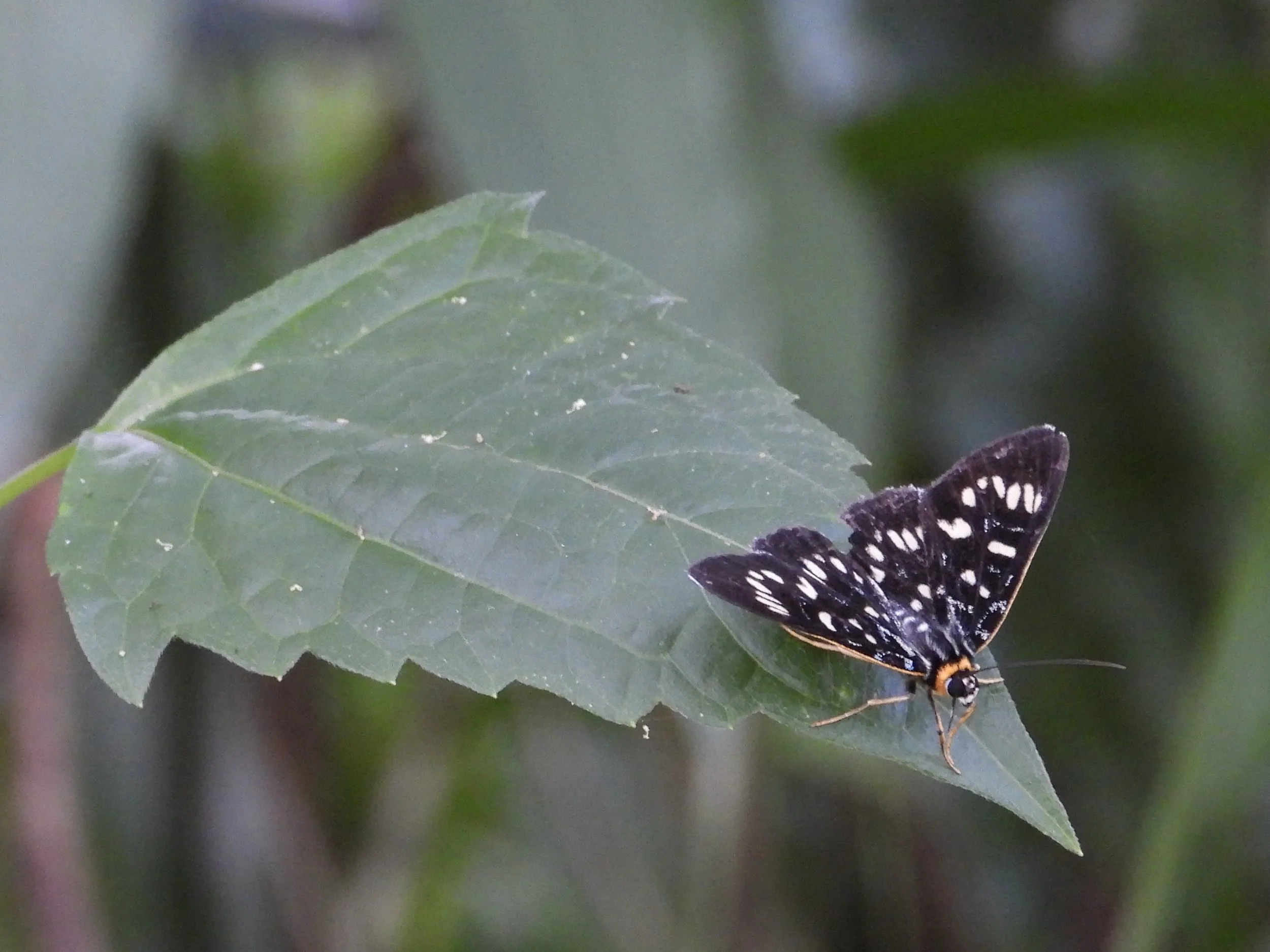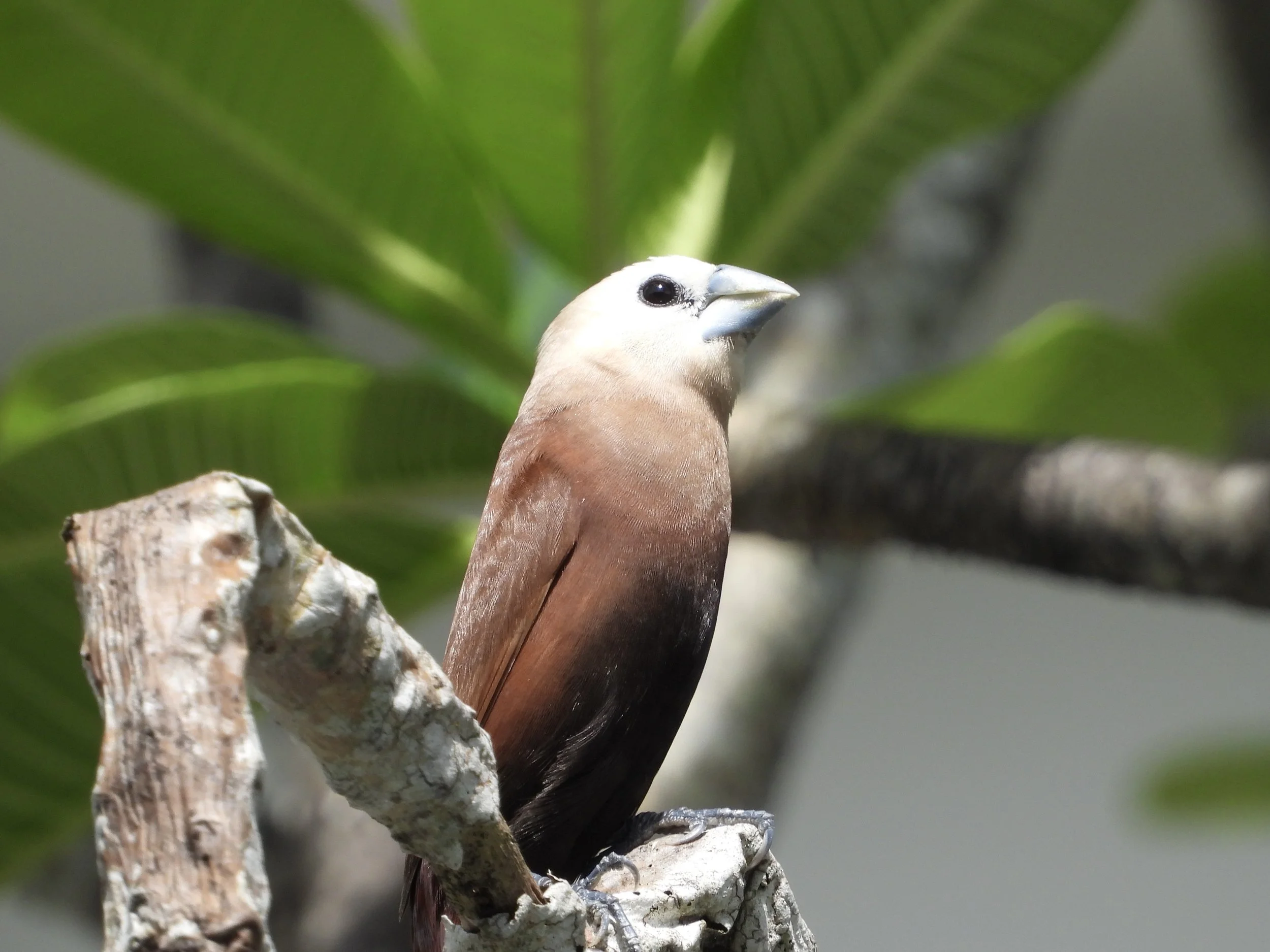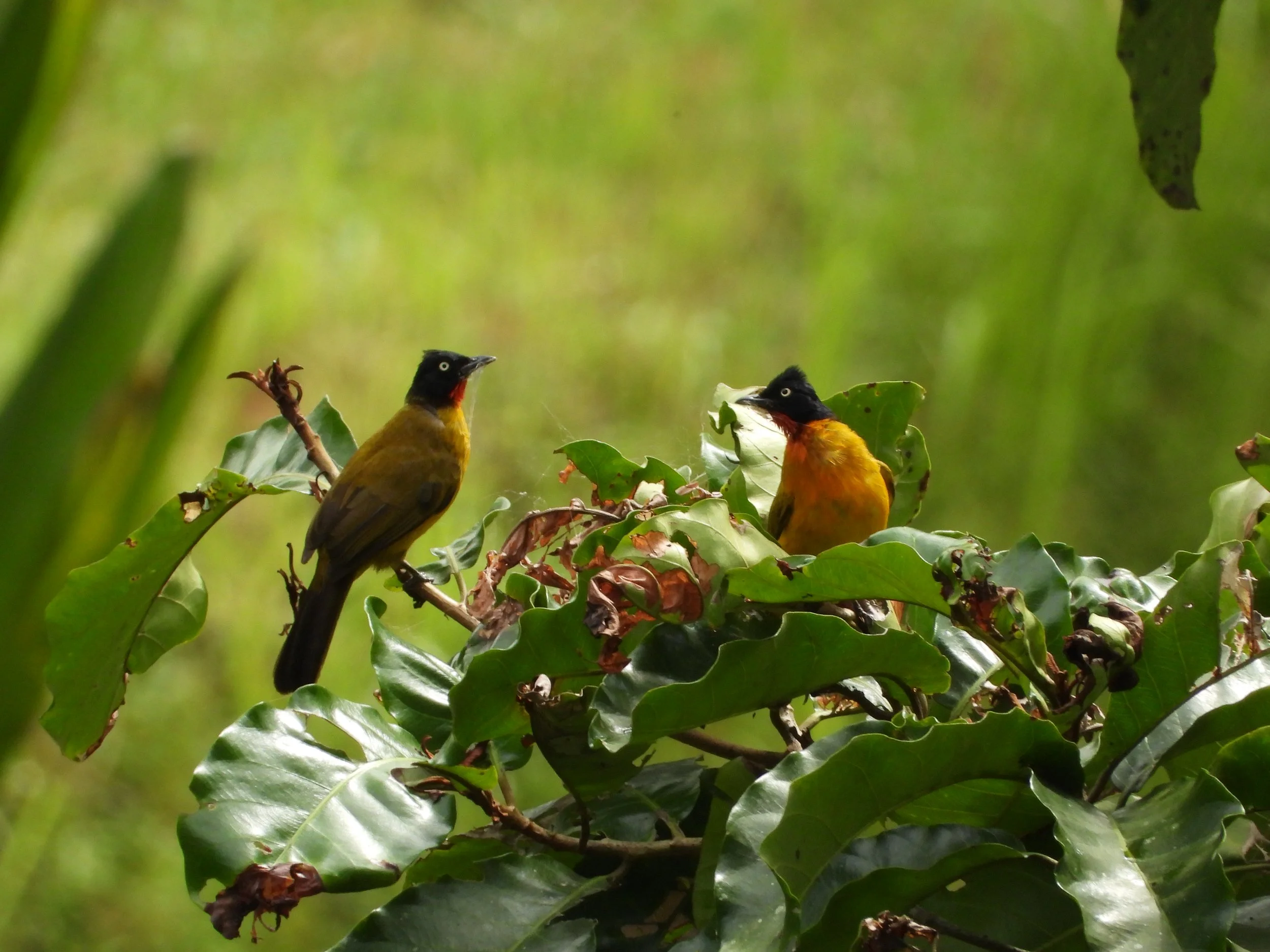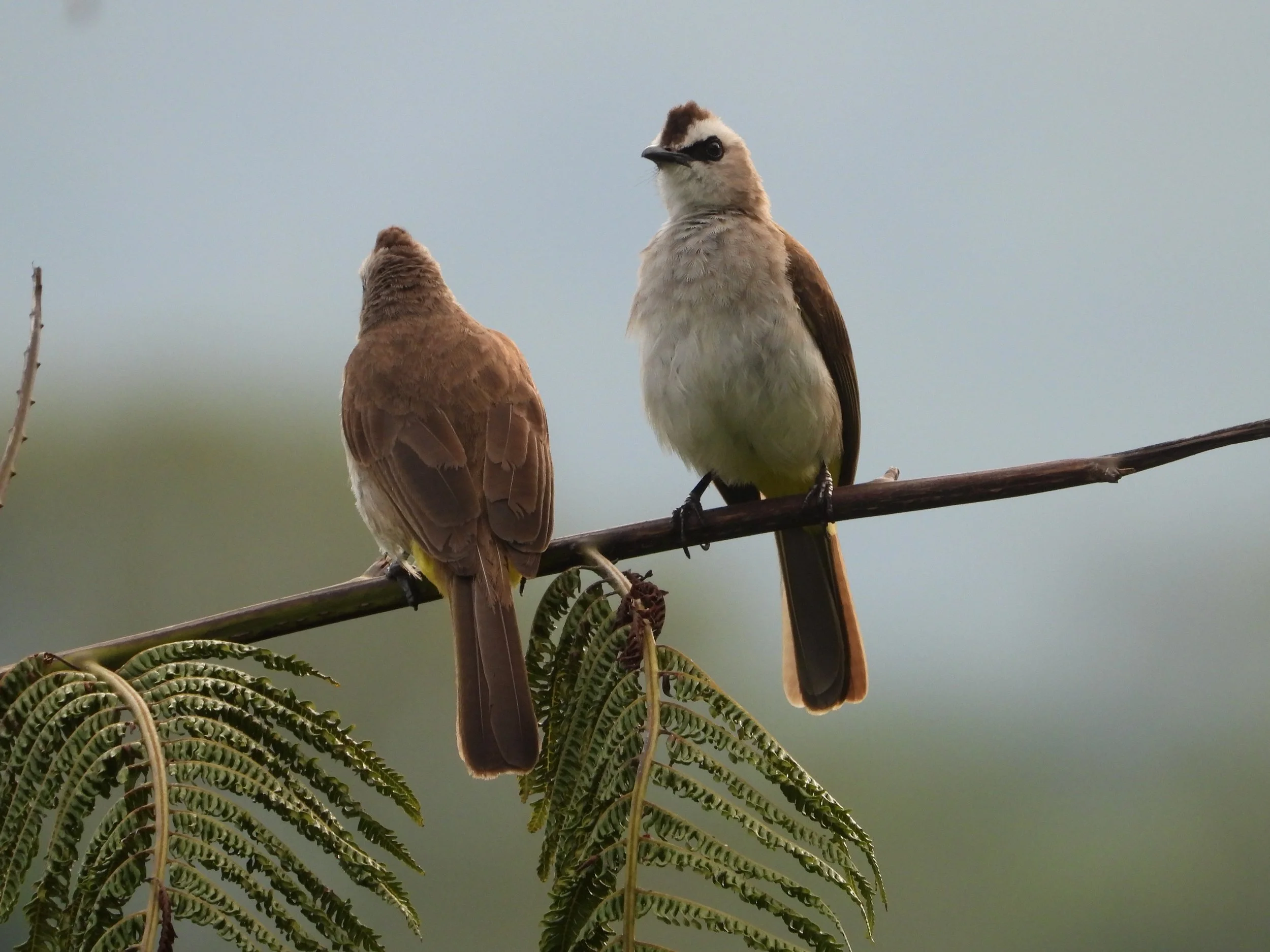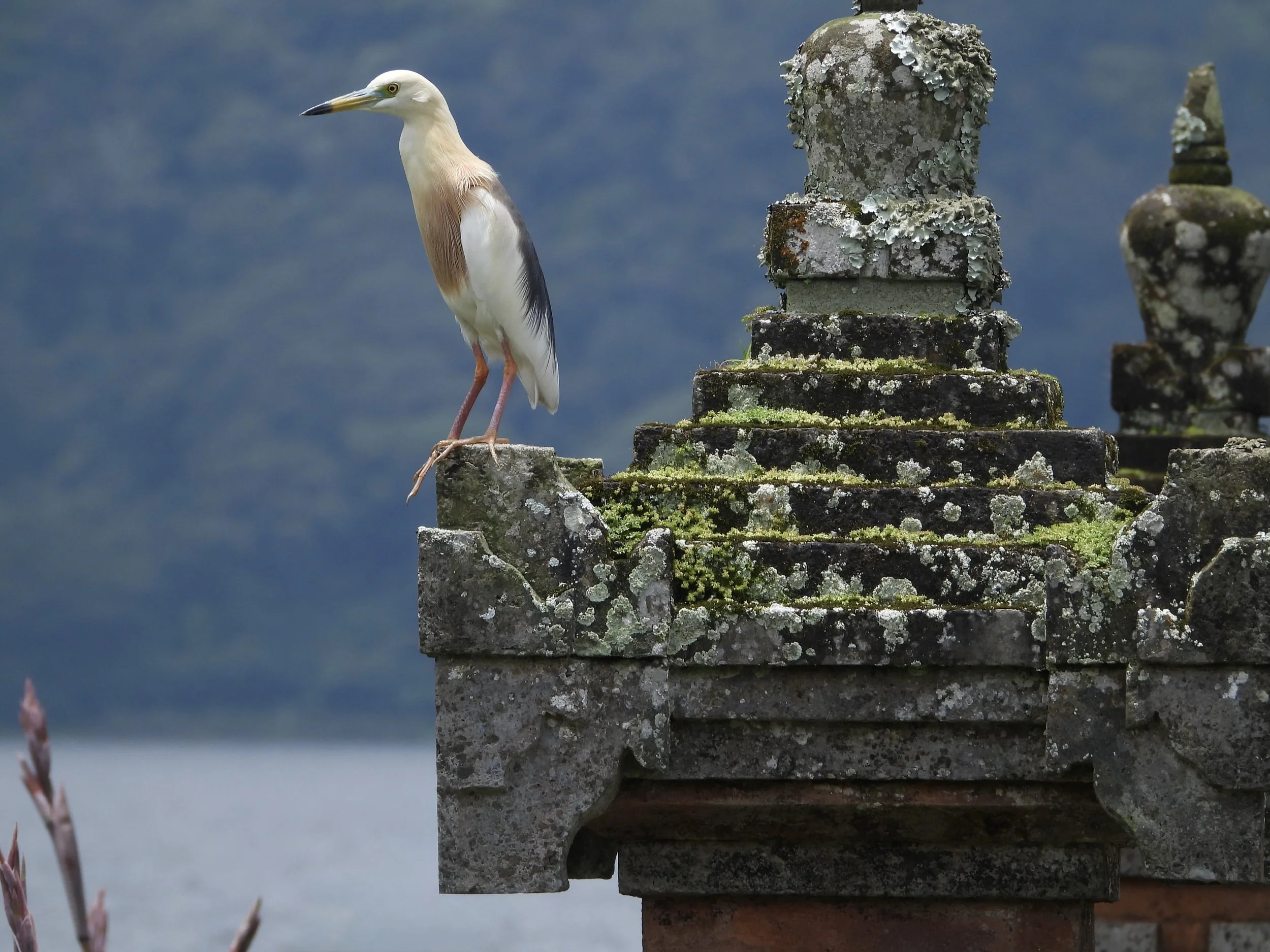The Bali We Chose
Click on any photo in our blog to enlarge its size
Bali is known to be one of Indonesia's most famous and beautiful islands. We decided to spend about three weeks discovering what this island is all about and so picked five different locations to explore.
The abundance of Balinese Hindu temples with its intricate and unusual designs intrigued us immediately. The temples come in all shapes and sizes, but mainly they are large, very ornate compounds with several shrines, spires, and pavilions, one more beautiful than the next. About 80% of the Balinese are Hindus, opposite the official Indonesian religion of Islam. We learned that every family has their own temple. There are also village temples and then there are larger public temples.
Those public temples are the ones we visited at several locations, but driving through any street, you can observe various temple structures behind low walls, one after the next, some smaller, some taller, most of them with a picturesque blackish patina showing their age in this hot and humid climate.
Family temple behind walls of family compound
Households live mostly in multi-family dwellings with 20-80 people, separated with a wall to the street and only smaller walkways perpendicular to the street. These compounds have a family temple, usually 3 to 6 structures with each structure representing different manifestations/aspects of Brahman, their one god. Those temples and their design is what I find so beautiful and unusual and I couldn’t get enough of seeing them.
Then there are those Hindu shrines, elaborately carved stone columns, every 25 meters or so, where locals leave their daily offerings in woven banana leaf baskets (called Canang Sari) either on the statue or on the ground and usually filled with flowers and other small items like rice and snacks.
Those Canang Sari can be found everywhere: on the ground in front of a house entrance, shop or restaurant, sometimes in clusters of three or more little baskets.
This stall sells the banana leaf baskets (left) and ingredients to make your own canang sari
While driving through Denpasar (the capital of Bali), the local temples were celebrating the holiday of Tumpek Landep, the god associated with metal, blacksmithing, and weaponry. He is revered as the divine force that grants power and spiritual energy to, specifically, metal objects which nowadays also include motorbikes, computers and such things. Imagine our surprise to find on top of the weights in the hotel gym one of those little banana leaf flower baskets!
Gods with Black and White plaid Batiks
Colors and flowers play an important role in people’s daily prayers; the colors primarily being yellow like yellow-orange mums/chrysanthemum flower blossoms or as cloth being a black and white checkered pattern or yellow fabric draped around stone statues. Men and women wear colorful, long batiked skirts like in old times, especially in the countryside far away from the bigger cities (and also those working in the hospitality industry).
Must have been a special day for them - dressed so nicely
We visited the Uluwatu temple, one of Bali’s most iconic sea temples, sitting majestically on the edge of a high cliff overlooking the Indian Ocean.
Cliff Walk along Uluwatu temple
We joined a filled open-air arena to see a show with a Kecak Dance telling the story of the Ramayana, featuring rhythmic chanting and a thrilling fire dance finale. Although our expectations before the performance weren’t high, the show turned out to be interesting, unique, and enjoyable.
We could have stayed several days longer in Uluwatu just because of our hotel pool.
From Uluwatu, we drove in a comfortable car to our next destination, Canggu, only 14 kilometers away. As we were heading to the second largest city and the main roads in Bali are all single-lane streets in each direction (mostly without traffic lights) and swarming with motorbikes weaving wildly around the fewer cars on the road, the trip took over two hours, which gave me a lot of time observing daily life right and left and the family temples that I mentioned earlier.
The amount of traffic in the more populated cities is well known (“You’re going to Canggu? Ohhh, lots of traffic!”), and travel times between destinations are usually two to three hours, but the cost to hire a car and driver is usually only $30, so with a little patience and a lot of curiosity, one can pass the time comfortably.
Locals
Buzzing Canggu is where all the back packers and surfers over the last decades spent their time, adding to the economic growth of this seaside town. It is a place of endless narrow streets, flanked on each side with retail shops, market stalls and outdoor restaurants. The streets are full of motorbike riders (mostly westerners). I have never encountered so many westerners in Asia as I have here in Bali; a younger, heavily tattooed crowd or barely clothed or older skinny singles or couples unwilling to shed their hippie roots. I guess you could call it a laid-back surf culture with lots of digital nomads.
Visiting one of the many Beach clubs is a thing to do in Canggu. So after lunch, we drove to a big and famous one, La Brisa Bali Beach Club, curious to learn what the Balinese Beach Club buzz was all about. To make it short: it’s most likely a hopping place at night, where younger folks hang out in the evening on wide sofa/flatbed lounges, drinking, eating and what-not. This beach club had many different areas, several restaurants/shops hanging together, rather nice looking, but nearly empty at the time we arrived. Curiously, there was no sandy beach associated with the “Beach Club”, only big rocks preventing one from enjoying the salty sea. But, rather, a flat pool, not too big, right in the middle of the club to soak and socialize in.
The financial arrangement at the club was intriguing. Lounge chairs closest to the sea where you can observe the surfers out in the water cost the most rupees, really outrageous prices considering how inexpensive Bali is. Further back towards the pool, the price was much less costly, and under a roof without a fan in the restaurant and bar, you just had to buy drinks. We looked around, decided it was not our “thing” and left. Instead, we decided to visit a few local shops on our pleasant stroll back to our hotel and amazing pool where we spent the rest of the afternoon.
Open-air restaurant and bar at our Chesa Canggu hotel
Our hotel in Canggu was like an oasis surrounded by the hustle and bustle of businesses, restaurants, and the noise of the motorbikes, people, and non-existent pedestrian walkways. Only one year old, Chesa Canggu is a compound of several 2-story duplexes, modern, quiet, comfortable, a good restaurant, two long and deep pools excellent for laps and the friendliest staff on the planet.
Although our room was small and adequate, we discovered a large air-conditioned lounge area above the restaurant with great internet that no one but us used. And the restaurant brought up all the food and drinks that we ordered. We called it our living room. The hotel was a little slice of heaven in that overstuffed town.
Tea time at the Chesa Canggu in our “living room”
Randy had booked a cooking class and was very excited about it. It turned out to be in a nearly-hidden-from-the-street 5-star resort, Hotel Tugu Bali, a small, understated complex with lotus flower and koi ponds and villas connected with little stone bridges and wooden board walks. In one corner was an outdoor teaching kitchen in which we spent several hours prepping three outstanding dishes. We watched the hotel chef finishing the meals right in front of us.
Enjoying the fruits of our labor: Sambal Goreng Udang, Pesan Bepasih, Ayam Pelalah, Sambal Bajak, and Lumpur Tele Ungu for dessert
Indonesian dishes start (like Indian dishes) with the spices and other aromatics first cooked in hot oil and then following a sequence when to add other ingredients. We so enjoyed our time cooking as well as exploring the whole property, so we returned the following evening for a dinner with a performance of several Balinese dances and musicians.
The hotel owner had collected over his life time antiques and craft items from all over Indonesia and those items gave the place the feel of an old beautiful living museum.
During our stay in Canggu, we visited two famous public temples. The first was the 400-year old Taman Ayun Temple, also called the Royal Water Temple of Bali, a Unesco World Heritage site. The huge area was surrounded by a moat filled with lotus flowers and water lilies, and having at the center many Meru towers, multi-tiered thatched-roof pagodas of various heights.
The other temple, Tanah Lot, sat on a rocky outcropping in the Indian Ocean. At high tide, it was surrounded by breaking waves; by low tide, usually around sunset, people were able to walk over the rocks to visit this famous landmark. It is one of Bali’s seven sea temples, forming a spiritual chain along the coastline to protect the island from evil spirits. It surely looked stunning, sitting on a massive rock, right in the ocean.
For a few days we stayed at the small island of Nusa Lembongan, a thirty minute ferry ride from Bali, which is known for their beautiful beaches, which we found surprisingly different than in our imagination.
We stayed at a Beach hotel and expected a white, sandy beach with crystal-clear water. Unfortunately, most of the hotels had their tour boats moored right off the beach making access rather uninviting. Although the Nusa islands have stunning beaches and beautiful snorkeling and diving opportunities, we used our time escaping the sticky heat at Lembongan reading, relaxing and enjoying the pool instead.
This instrument is called a Rindik, a traditional Balinese instrument
Passion fruit frozen Margarita to be consumed rapidly
On Nusa Lembongan island, we conversed easily with other older western couples, mainly Australians and British, who, like ourselves, were retired and traveling in South-East Asia without time restrictions and exploring this fascinating part of the world, enjoying the comfortable cheaper living costs and the always very friendly locals before traveling back home for a few months.
After returning to the mainland and another several hour car ride (only 10 km), we arrived at Ubud, our next destination. Although also swarming with Westerners, this town immediately felt very comfortable to us. Overall, we had the impression of a cleaner town, better shops and restaurants and just a nice vibe. This town is famous for the many yoga opportunities, and we heard that the Yoga Barn specifically offers drop-in yoga classes of all branches and varieties, daily, for all levels from beginners to already practicing yogis and lots of options for becoming yoga teachers. It was the balance between culture, nature, and wellness that attracted us to this area.
Overlooking the tree canopy where the birds soared at dusk
Here in Ubud, we took another cooking class learning about the main ingredients for the basic Balinese Spice starter, from which many recipes are then developed. The menu was completely different than our previous cooking class and we enjoyed all the dishes and our time spent cooking.
While I spent some time off reading and relaxing at the hotel, Randy booked an early morning excursion to some nearby attractions. His five hour tour began with a visit to the scenic Tegalalang Rice Terrace, beautiful in its sculpted grace if not a bit touristy with a number of photo opportunity stations set up along the steep terraces. He wandered around the Ulu Petanu Waterfall, the holy springs of Tirta Empul Temple where one can participate in a cleansing ceremony, and as an extra bonus on his way back, the Satria Coffee plantation, an organic agrowisata where Randy enjoyed a cup of the famous Balinese Luwak coffee, considered by some to be the most expensive coffee on the planet.
Gitty enjoyed taking a Balinese dance class
Randy and I strolled along the Campuhan Ridge walk, a scenic hiking trail through rolling hills and rice fields on top of a rather narrow ridge, looking down along both sides into the green valleys and onto the high cliffs of the other sides. Just phenomenal views, full of palm trees and lots of tropical plants, blooming and colorful, attracting so, so many varieties of butterflies.
I counted at least twelve different species fluttering about during our walk. In general, we encountered in Bali an enormous quantity and variety of small and really big butterflies to our delight (but of course they’re very difficult to photograph).
Standing at the end gates of the Campuhan Ridge walk
Our final destination brought us to the area of Bedugul in the highlands of north/central Bali.
Massive strangler fig at the Bali Botanical Garden
Here we arose early for what we believed to be a birding trip but turned out to be a jungle walk. We hoped to observe birds, but with the dense forest and with most of the trees being 25-30 meters high, we concentrated more on the jungle fauna and flora around us.
The trees towered over the jungle
Together with our guide
Our guide pointed out interesting plants and colorful or hidden insects along the way.
We took the smallest paths through a pristine rainforest which is fortunately protected under conservation regulations
We saw many century-old ficus trees encased by strangler vines forming their own cluster of tree trunks, standing strong and independent. They play a crucial role in tropical ecosystems like this one, providing all year-round food aka figs for birds and animals as well as shelter in the hollow spaces and also refuge in the high canopy for many animals. Because of the density and the variety of plants, this jungle trek was the highlight of our time in Bali for me.
After several hours hiking through narrow jungle paths, we ended up in a small village close to one of the four lakes in Bali where we stopped at the farm of a local woman.
A tandem canoe eventually brought us over the lake back to where we started this fantastic journey.
Even though we didn’t see many birds on the jungle walk, we were successful spotting birds in Bali.
Here in the higher elevations the air was comfortably cooler. On our way back to our lodge in the mountains, we stopped at another Unesco World Heritage site, the rice terraces of Jatiluwih in the area of Tabanan.
It’s a huge area, very picturesque and protected under the banner of Unesco where rice is grown and harvested by hand two times annually using the traditional irrigation system opposite many rice fields in Bali where agricultural machines are now being used for harvesting.
Alam Mountain lodge had the best view of the surrounding landscape
Mountain view from Hotel after a rainstorm blew past
Condiment covers made out of local thatch adorned our dining table
Bali turned out to be an interesting and unique mixture of natural areas, rich Hindu culture, and warm hospitality. Although we saw mass tourism nearly everywhere, especially in the more populated towns of the south close to Denpasar, we successfully escaped most of the chaos, choosing our own interests over the many other highlights and sight-seeing spots of this amazing island.
We really enjoyed our time in Bali

